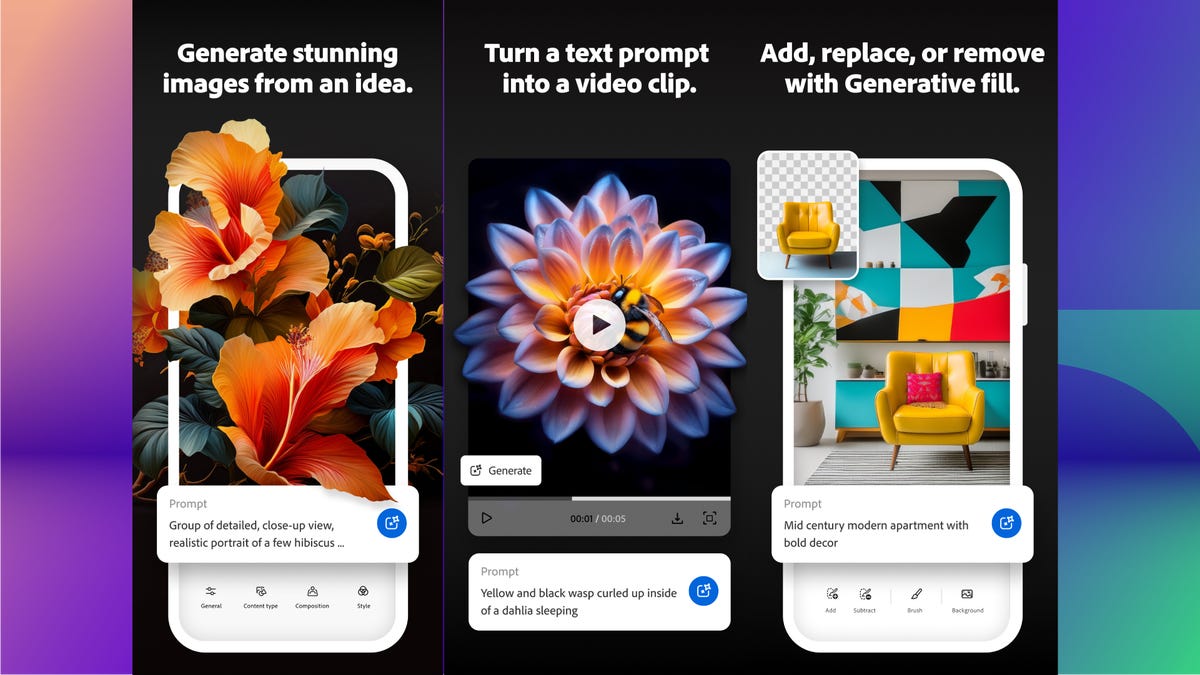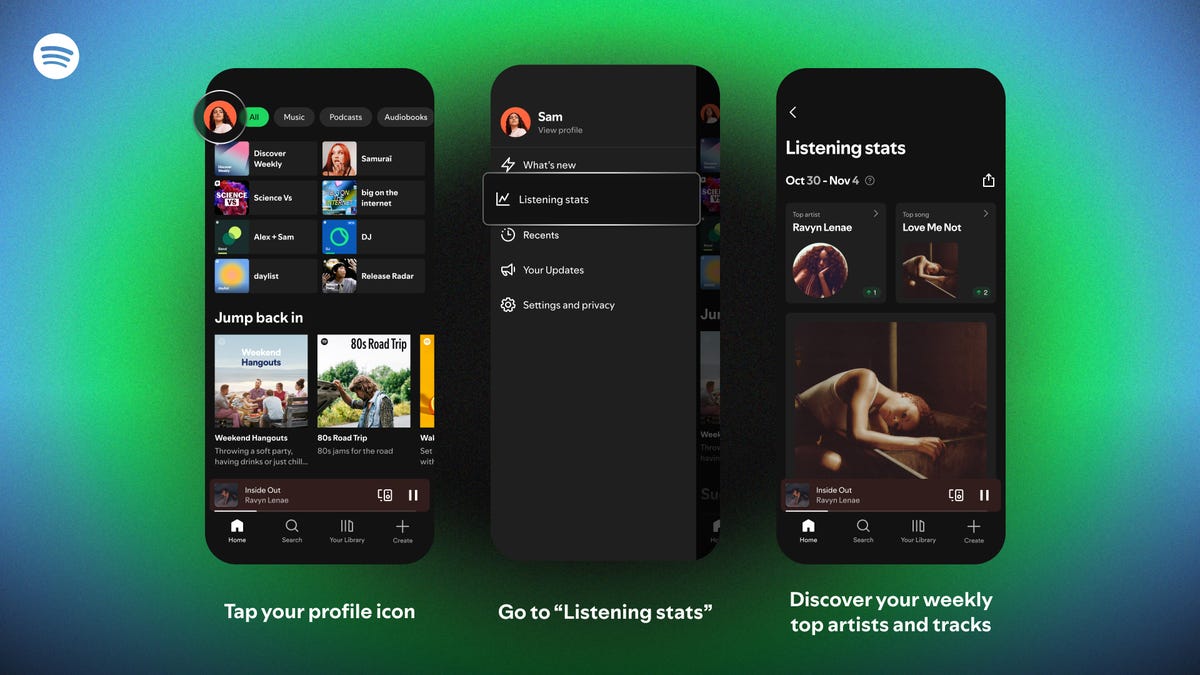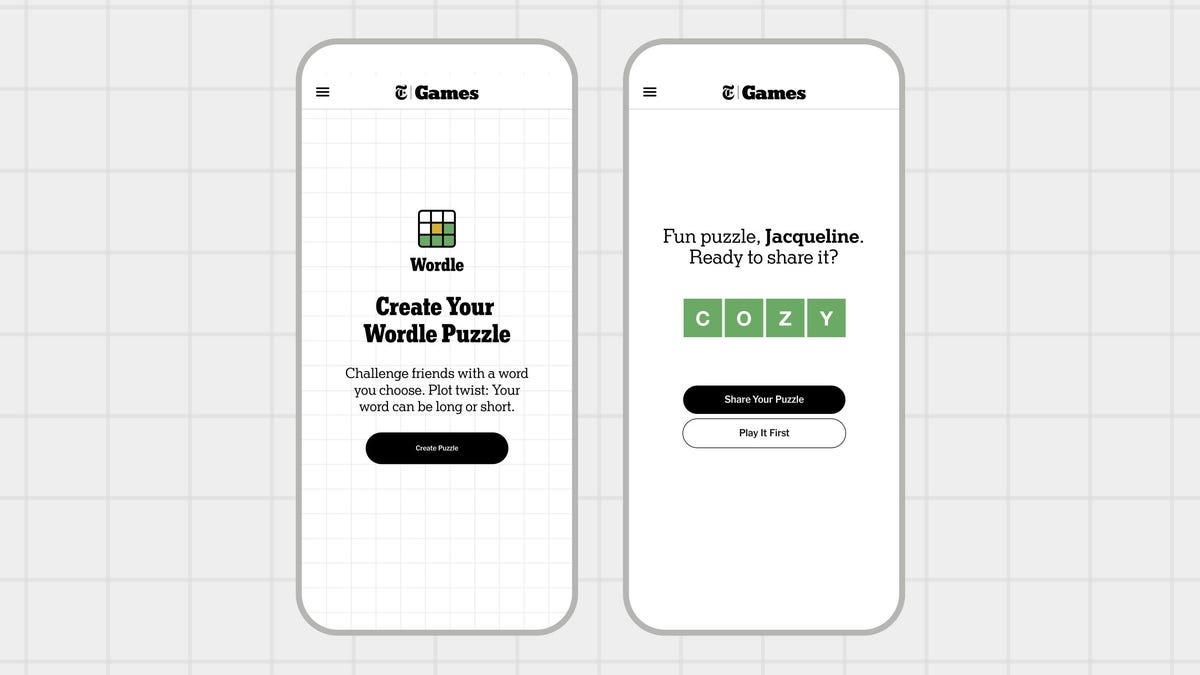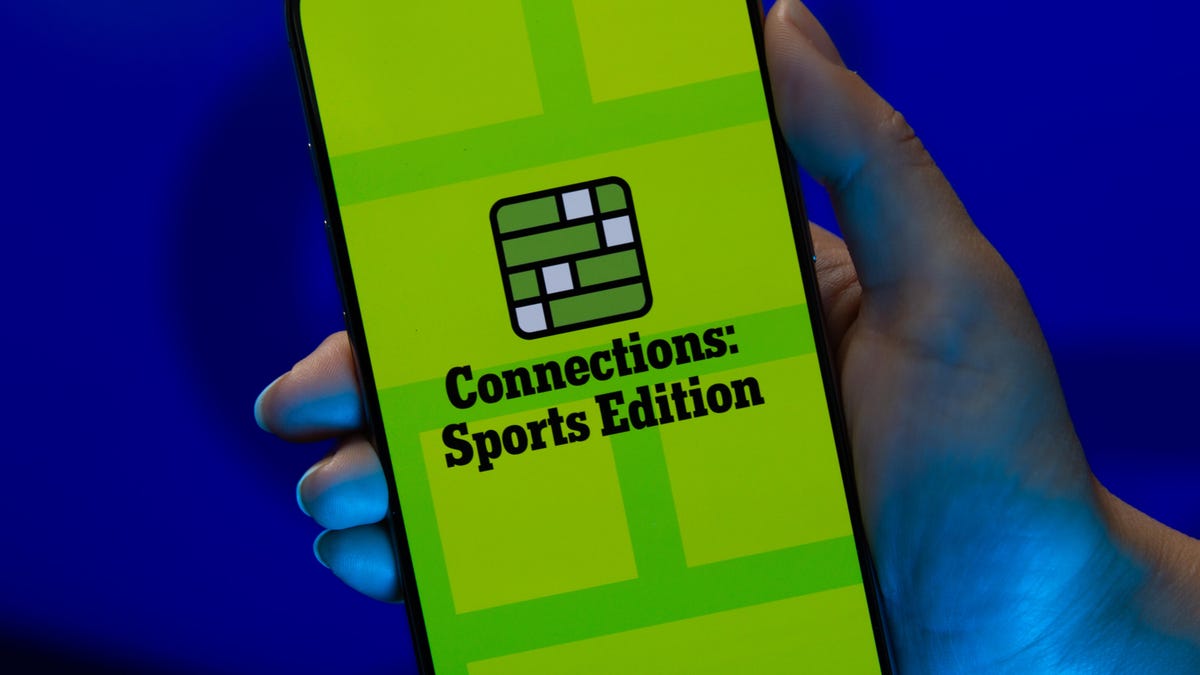Technologies
Adobe’s New Firefly AI App Lets You Try AI Image and Video Generation for Free
Both the iOS and Android versions of the app give you free credits to experiment with Adobe’s AI.

Adobe’s Firefly AI is now available as mobile apps for iPhones and Androids, the company announced on Tuesday. These apps are free to download and let you use Firefly to create AI images and videos on the go. Plus, the app comes with a few free generative credits for you to experiment with Adobe’s AI.
Adobe is also expanding its roster of third-party AI partners to include six new models from Ideogram, Pika, Luma and Runway. Google’s latest AI models are also joining the lineup, including the internet-famous Veo 3 AI video generation model with native audio capabilities and the Imagen 4 text-to-image model support. Finally, its moodboarding AI program, Firefly Boards, is generally available today after months in beta.
Here’s everything you need to know about Adobe’s newest batch of Firefly AI updates. For more, check out our favorite AI image generators and what to know about AI video models.
Firefly AI for iOS and Android users
Adobe’s Firefly mobile apps will let you access its AI image and video capabilities from your phone. A mobile app felt like the next natural step, since Adobe saw that mobile web usage of Firefly noticeably increased after Adobe’s Firefly video capability launched in early 2025.
Not every Firefly feature will be available at launch, but for now, we know that these features will be included: text-to-image, text- and image-to-video, generative fill, and generative expand. You can download the app now from the Apple App Store and Google Play Store.
The app is free to download, but you’ll need a Firefly-inclusive Adobe plan to really use the app. In the hopes that you’ll sign up for a full plan, Adobe gives you 12 free generation Firefly credits (10 for images, two for videos, which doesn’t shake out to many of each). So you can use those to see if Firefly is a good fit for you.
Firefly plans start at $10 per month for 2,000 credits (about 20 videos), increasing in price and generation credits from there. Depending on your Adobe plan, you may already have access to Firefly credits, so double-check that first.
Adobe’s six new AI models from Google, Runway and more
Adobe’s also adding new outside AI creative models to its offerings, including image and video models from Ideogram, Pika, Luma and Runway. You might recognize the name Runway from its deal with Lionsgate to create models for the entertainment giant. Ideogram, Pika and Luma are all other well-known AI creative services. Google’s Veo 3 AI video generator is also joining, bringing its first-of-its-kind synchronized AI audio capabilities, along with the latest generation of Google’s AI image model.
This is the second batch of third-party models that Adobe has added to its platform. Earlier this spring, Adobe partnered with OpenAI, Google and Black Forest (creator of Flux) to bring the companies’ AI models to Adobe. What’s unique about this is that all third-party models have to agree to Adobe’s AI policy, which prevents all the companies from training on customers’ content — even if the individual companies don’t have that policy on their own, it’s standardized across all models offered through Adobe. This is also true for the new models added today. For AI-wary professional creators who make up the majority of Adobe users, that’s a bit of good news.
You’ll need a paid Firefly plan to access outside models; otherwise, you’ll just have access to the Adobe models. Here are all the AI models available through Adobe:
- Adobe Firefly Image 3
- Adobe Firefly Image 4
- Adobe Firefly Image Ultra
- Flux 1.1 Pro
- Flux 1 Kontext
- Google’s Imagen 3
- OpenAI’s image generation model
- (new) Ideogram 3
- (new) Google’s Imagen 4
- (new) Runway’s Gen-4 Image
For video, you can use:
- Adobe Firefly Video
- Google Veo 2
- (new) Google Veo 3
- (new) Luma AI Ray 2
- (new) Pika’s text-to-video generator
Adobe’s own Firefly AI models are trained on a combination of Adobe Stock and other licensed content. You can learn more in Adobe’s AI guidelines and approach to AI.
AI moodboarding gets a boost
Other Adobe updates include the general release of its moodboarding program, Firefly Boards, which has been in beta since April. Moodboarding is a practice that lets you cluster together different elements, like colors and shapes, to evoke specific moods and aesthetics. It’s a good initial step for planning content and campaigns.
You can use the infinite canvas to brainstorm and plan content. You can generate images and videos in Boards using Adobe and non-Adobe models; the setups are very similar to generating in the regular Firefly window. Boards are collaborative, so you can edit with multiple people. A new one-click arrange button can help you organize and visualize your files more easily, a much-requested feature that came out of the beta.
Firefly boards are synced up with your Adobe account. So you can select a photo in a Board, open it in Photoshop and edit it. Those changes will then be synced up with your Firefly Board in less than a minute, so you can always see the latest version of your file without needing to be limited to editing in Boards.
For more, check out Premiere Pro’s first generative AI feature and the best Photoshop AI tools.
Technologies
Spotify Brings Wrapped Energy Year-Round With Friend-Sharing Stats
The music service introduced new ways for music nerds to share their listening habits with friends.

It can be a long wait for Spotify Wrapped, the end-of-year promotion that allows Spotify users to view and share their listening habits. Now, users can keep an eye on those stats daily, plus share their listening habits with friends.
You can view your Spotify usage statistics every 24 hours and share your updates via social media services, such as Instagram Notes or Spotify Messages. The new share icon gives you access to eight different services where you can post your stats.
Every week, you’ll get updates on your top artists and songs from the past month, and Spotify will recommend new playlists. The app also gives you a «special highlight» based on a specific artist or song.
To access your personal musical data, click on your profile in the top left corner of the app and scroll down to «listening stats.»
Don’t miss any of our unbiased tech content and lab-based reviews. Add CNET as a preferred Google source.
The new features are somewhat similar to Spotify Wrapped, the service’s annual end-of-year review of users’ listening habits, which is designed to be shared. Every year, Spotify adds extra details to Wrapped, such as assigning users a listening personality or a city that supposedly reflects their music tastes. It’s been the most popular way for Spotify users to view and share their music listening in the past. A number of third-party services do the same thing, including Volt.fm.
Read more: Best Music Streaming Services
Spotify is the world’s largest music streaming service, offering 100 million tracks and serving more than 713 million users. In addition to its $12-per-month subscription service, Spotify also offers a free, ad-supported option.
Technologies
Wordle Gets Personal: You Can Now Make and Share Your Own Puzzles
If you’re a Wordle obsessive, you can now make your own inside joke puzzles to send to friends.

Wordle’s an immensely popular New York Times word game (we post the answers daily), but it’s not the most personal game in the world. Answers such as GUISE and PERIL are tricky, but generic. Now, Wordle fans who have ever dreamed of making their own puzzles can test their friends and family by creating their own Wordle creations up to seven letters in length.
No surprise, you have to be a New York Times Games or All Access Subscriber to use this feature. If you are, you’ll find the Create a Puzzle option available from the top menu above today’s Wordle. While you must be a subscriber to create your own personalized puzzle, you can share it with anyone — they only need the link, not a subscription, to complete your Wordle.
Don’t miss any of our unbiased tech content and lab-based reviews. Add CNET as a preferred Google source.
Enter a word, and the site will tell you if it is available. Real Wordle limits you to five-letter words, but the puzzle-making feature lets you choose words between 4 and 7 letters.
The usual dictionary rules apply, and so curse words, some pet names, and obscure inside jokes are essentially out. If your cat is named TANGO, that’s there, but RINGO is not an option. You can drop a proposal with a single word like MARRY, but MARRYME will get rejected since that’s two separate words.
Word chosen, you can then fill out your name and add an optional hint, and the feature will generate your puzzle with a link you can send around. Unlike standard puzzles, your puzzle doesn’t appear to reset after a day, so whoever you send it to doesn’t need to rush to solve it.
Looking for the most recent Wordle answer? Click here for today’s Wordle hints, as well as our daily answers and hints for The New York Times Mini Crossword, Connections, Connections: Sports Edition and Strands puzzles.
Technologies
Today’s NYT Connections: Sports Edition Hints and Answers for Nov. 8, #411
Here are hints and the answers for the NYT Connections: Sports Edition puzzle No. 411 for Saturday, Nov. 8.

Looking for the most recent regular Connections answers? Click here for today’s Connections hints, as well as our daily answers and hints for The New York Times Mini Crossword, Wordle and Strands puzzles.
Today’s Connections: Sports Edition is a tricky one. The theme of the purple category is also a word hidden among the answers, but of course, it doesn’t end up in the purple group. If you’re struggling but still want to solve it, read on for hints and the answers.
Connections: Sports Edition is published by The Athletic, the subscription-based sports journalism site owned by the Times. It doesn’t show up in the NYT Games app but appears in The Athletic’s own app. Or you can play it for free online.
Read more: NYT Connections: Sports Edition Puzzle Comes Out of Beta
Hints for today’s Connections: Sports Edition groups
Here are four hints for the groupings in today’s Connections: Sports Edition puzzle, ranked from the easiest yellow group to the tough (and sometimes bizarre) purple group.
Yellow group hint: Brawl.
Green group hint: The Steel City.
Blue group hint: They once played in Oakland.
Purple group hint: Not always made of cardboard.
Answers for today’s Connections: Sports Edition groups
Yellow group: Fight.
Green group: A Pittsburgh athlete.
Blue group: Parts of the Las Vegas Raiders’ logo.
Purple group: ____ box.
Read more: Wordle Cheat Sheet: Here Are the Most Popular Letters Used in English Words
What are today’s Connections: Sports Edition answers?
The yellow words in today’s Connections
The theme is fight. The four answers are box, duke, scrap and spar.
The green words in today’s Connections
The theme is a Pittsburgh athlete. The four answers are Panther, Penguin, Pirate and Steeler.
The blue words in today’s Connections
The theme is parts of the Las Vegas Raiders’ logo. The four answers are eye patch, helmet, shield and swords.
The purple words in today’s Connections
The theme is ___ box. The four answers are batter’s, luxury, penalty and press.
-

 Technologies3 года ago
Technologies3 года agoTech Companies Need to Be Held Accountable for Security, Experts Say
-

 Technologies3 года ago
Technologies3 года agoBest Handheld Game Console in 2023
-

 Technologies3 года ago
Technologies3 года agoTighten Up Your VR Game With the Best Head Straps for Quest 2
-

 Technologies4 года ago
Technologies4 года agoVerum, Wickr and Threema: next generation secured messengers
-

 Technologies4 года ago
Technologies4 года agoBlack Friday 2021: The best deals on TVs, headphones, kitchenware, and more
-

 Technologies4 года ago
Technologies4 года agoGoogle to require vaccinations as Silicon Valley rethinks return-to-office policies
-

 Technologies4 года ago
Technologies4 года agoOlivia Harlan Dekker for Verum Messenger
-

 Technologies4 года ago
Technologies4 года agoiPhone 13 event: How to watch Apple’s big announcement tomorrow
